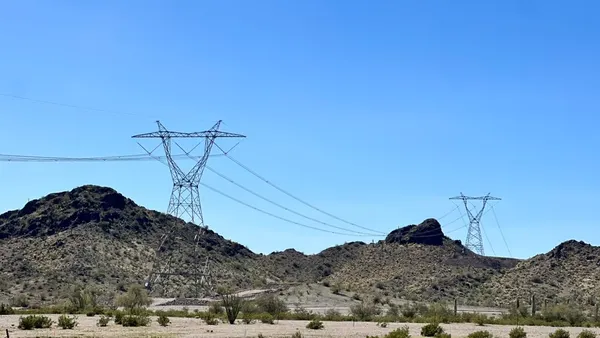Dive Brief:
-
The New York Power Authority (NYPA) on Thursday released key takeaways from a commissioned study of European offshore wind transmission models that will guide New York as it pursues its goal of 9 GW of offshore wind by 2035.
-
The report studied Denmark, Germany, the Netherlands and the U.K. Key findings to facilitate large-scale deployment in the U.S. include transparent, long-term planning and coordination and encouraging healthy competition, according to NYPA.
-
Democratic Gov. Andrew Cuomo wants the state to get 70% of its electricity from renewable sources by 2030. The study of European interconnection models will provide important information to help the state reach its offshore wind goal, according to experts.
Dive Insight:
Offshore wind in the U.S. is nascent but rapidly growing.
The first offshore project in the U.S. to be completed was the Block Island Wind Farm in Rhode Island in 2016, according to the report. But last month, New York awarded two contracts for a total of 1,700 MW of offshore wind, as it approaches its 9 GW goal.
Other states in the resource-rich Northeast, like New Jersey, Connecticut and Massachusetts, also have multi-gigawatt goals. According to the report, the region as a whole has "committed to over 19 GW of installed capacity by 2035."
In light of the rapidly expanding market, NYPA and a coalition of stakeholders including NYISO, Consolidated Edison, the Long Island Power Authority and the New York State Energy Research & Development Authority (NYSERDA) decided to look to Europe, where offshore wind has been in development for 20 years and about 17 GW have already been built.
"We see great value in studying what European countries have learned about transmission and interconnection infrastructure. We can now apply those learnings to build cost-effective projects that benefit all New Yorkers and our key partners and stakeholders while advancing the Governor’s aggressive climate goals," Gil Quiniones, president and CEO of NYPA, said in a statement.
"The key, key takeaway … is how important coordination is," Sylvia Louie, senior business development manager at NYPA and project manager of the report, told Utility Dive. "Not just among the usual suspects ... we all have to be on the same page with this and be able to coordinate and work together to make these goals happen."
European and American regulatory frameworks differ in that in European countries, transmission is regulated by a central entity, the Transmission System Operator, which plans, operates and often owns the grid, said Louie.
By contrast, the American model divides responsibility for transmission between ISOs, developers and utilities. This means there are fewer opportunities for competition in Europe, whereas the American model is conducive to private-public partnerships.
Louie says coordination between stakeholders and neighboring states will be key to the success of offshore wind in New York.
Another key takeaway from the report is the difference between radial and network models for offshore wind development, which American developers and regulators will need to assess as they seek to add offshore capacity.
In a radial model, individual projects are directly linked by cables to interconnection points on shore, whereas in a network model multiple projects, potentially built by different developers and farther offshore, all connect to a single point in the water which interconnects with the onshore grid, Louie said.
"Germany utilizes their networked model ... because they have a limited shoreline and sensitive marine environment. So they really want to limit the amount of cables that come on shore," Louie said. Parallels to New York, which has a coastline almost entirely limited to Long Island and relatively few interconnection points, are possible, Louie explained, although Denmark and the Netherlands have adopted radial models successfully despite short coastlines.
New York is also committed to ensuring that offshore wind development is undertaken in a manner that is sensitive to impacts on wildlife and commercial fishing. NYSERDA on Thursday also announced $2 million for five projects to study the impacts of offshore wind on fish, whales, birds and bats as well as model wildlife distribution patterns in the New York Bight.
"As New York becomes the national epicenter for the U.S. offshore wind industry, we continue to undertake evidence-based environmental and commercial fishing related research to help us advance offshore wind development in [a] way that is sensitive to the environment, ocean and the economy," Alicia Barton, president and CEO of NYSERDA said in a statement.













